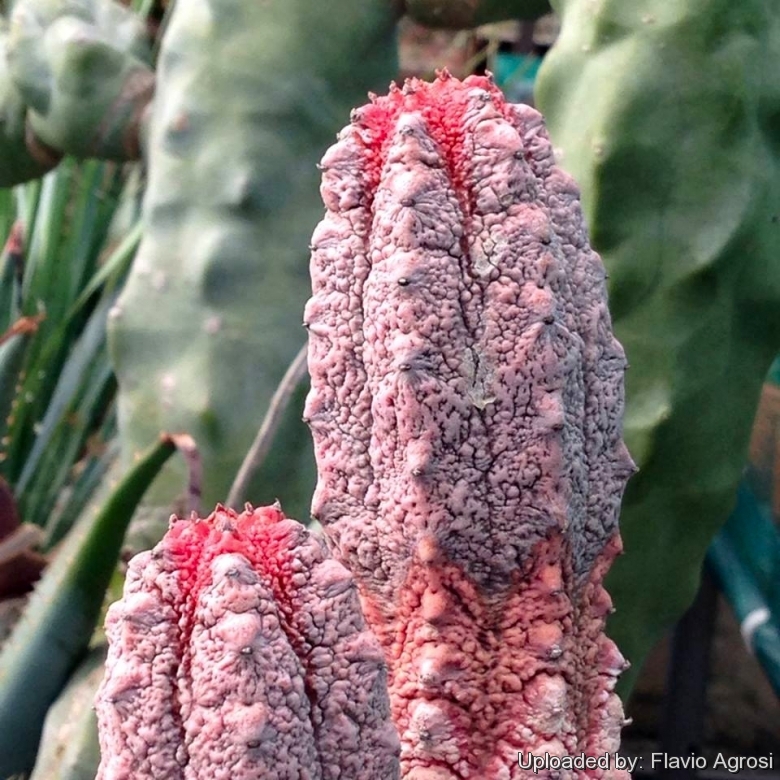
Euphorbia abdelkuri cv. Damask Photo by: Flavio Agrosi
Origin and Habitat: Garden origin. The original natural habitat of this species is the Abd al Kuri Island, next to Socotra Island, Yemen.
Synonyms:
See all synonyms of Euphorbia abdelkuri
back
Accepted name in llifle Database:Euphorbia abdelkuri Balf.f.Nat. Pflanzenfam. [Engler & Prantl] 528 1903 et in: Rep. Brit. Ass. Glasgow (1901) 854.
Cultivars
(1):
back
Description: The Euphorbia abdelkuriSN|21582]]SN|21582]] is a very peculiar candelabra-like succulent plant which looks like a grey candle with whitish-grey melted wax on it. It form densely branched candelabra-like clumps usually not more than 1 m hight by 1,5 in diameter on one clump (but occasionally in habitat some plants can reach 3 m of height and an equivalent diameter). It is one of the most coveted Euphorbia species.
cv. Damask This charming cultivars differs from the standard Euphorbia abdelkuriSN|21582]]SN|21582]] in its pinkish-reddish body colour, varying in intensity with light levels. This cultivar appeared during 1999 on an otherwise typical grey plant of Euphorbia abdelkuriSN|21582]]SN|21582]].
Roots: Spreading.
Stems: About 5 cm in diameter, pinkish-reddish, columnar, spineless, simple, branching from the base or occasionally splitting dichotomously. Generally has 6 ribs with a somewhat wrinkled, worn looking 'skin' with slightly raised conical tubercles. Time by time some branches produces grey ribs. Grey colouring is usually confined to whole or half ribs to varying degrees. Random patches of grey on a plant rarely occur and then only on very young offsets. Change in a bicoloured plant is always for the red to take over partially or totally from the grey, never the opposite. The colour of the new growth is a a brighter pinkish red and it will then turn to the grey-pink colour. The latex is yellow.
Leaves: Very small, ephemeral.
Inflorescence: Simple cymes from the base of the tubercles.
Flower: Small cyathia about 5 mm in diameter on 8 mm long peduncles. Nectar glands yellowish. Pedicel very short.
Fruit: Vaguely lobed, about 8 mm in diameter.
Subspecies, varieties, forms and cultivars of plants belonging to the Euphorbia abdelkuri group
Bibliography: Major references and further lectures
1) Balfour, I. B. "Angiospermae" in Forbes, H. O. (ed.), "The natural history of Sokotra & Abd-el-Kuri" The Free Public Museum, Liverpool pp. 528-530 1903
2) James Cullen, Sabina G. Knees, H. Suzanne Cubey “The European Garden Flora Flowering Plants: A Manual for the Identification of Plants Cultivated in Europe, Both Out-of-Doors and Under Glass” Cambridge University Press, 11/ago/2011
3) Lavranos, J.J. "The island of Abd al Kuri and its peculiar Euphorbia." in: Cact. Succ. J. Amer. 43: 109-111 1971
4) Gren Lucas "The IUCN Plant Red Data Book: Comprising Red Data Sheets on 250 Selected Plants Threatened on a World Scale" IUCN, 01/gen/1978
5) Urs Eggli “Illustrated Handbook of Succulent Plants: Dicotyledons” Springer, 2002
6) Volker Buddensiek "Sukkulente Euphorbien." Ulmer, 1998
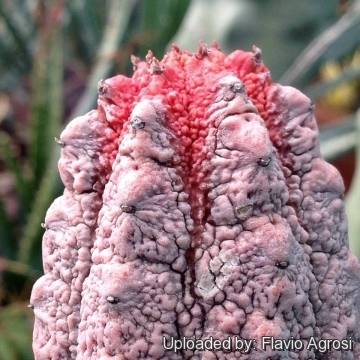 Euphorbia abdelkuri cv. Damask Photo by: Flavio Agrosi
Euphorbia abdelkuri cv. Damask Photo by: Flavio Agrosi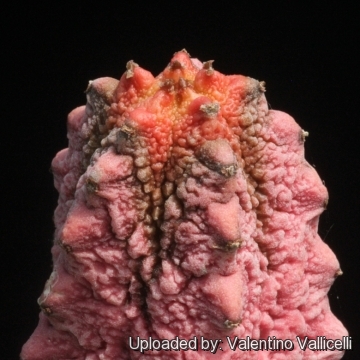 Euphorbia abdelkuri cv. Damask Photo by: Valentino Vallicelli
Euphorbia abdelkuri cv. Damask Photo by: Valentino Vallicelli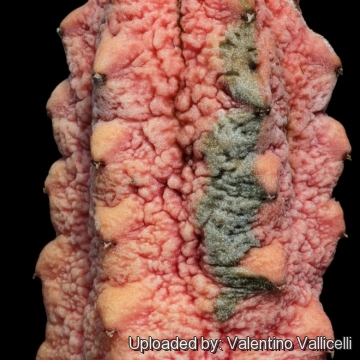 Euphorbia abdelkuri cv. Damask Photo by: Valentino Vallicelli
Euphorbia abdelkuri cv. Damask Photo by: Valentino Vallicelli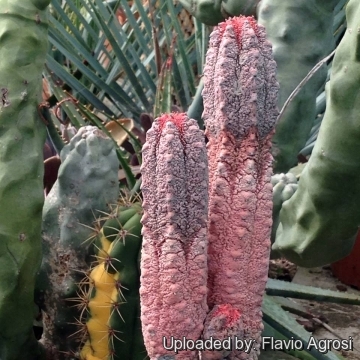 Euphorbia abdelkuri cv. Damask Photo by: Flavio Agrosi
Euphorbia abdelkuri cv. Damask Photo by: Flavio Agrosi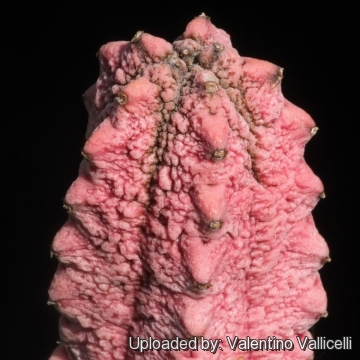 Euphorbia abdelkuri cv. Damask Photo by: Valentino Vallicelli
Euphorbia abdelkuri cv. Damask Photo by: Valentino Vallicelli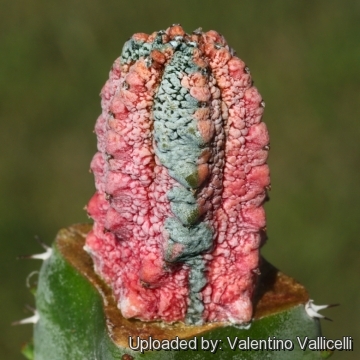 Euphorbia abdelkuri cv. Damask Photo by: Valentino Vallicelli
Euphorbia abdelkuri cv. Damask Photo by: Valentino Vallicelli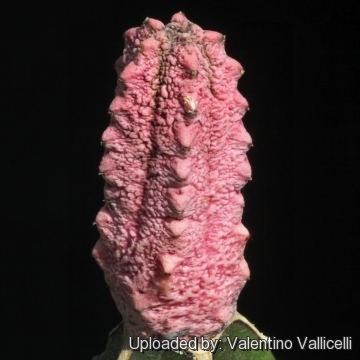 Euphorbia abdelkuri cv. Damask Photo by: Valentino Vallicelli
Euphorbia abdelkuri cv. Damask Photo by: Valentino Vallicelli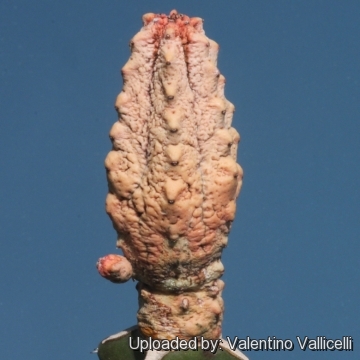 Euphorbia abdelkuri cv. Damask Photo by: Valentino Vallicelli
Euphorbia abdelkuri cv. Damask Photo by: Valentino VallicelliCultivation and Propagation: Due to its slow growth rate and rarity it is thought difficult to grow on its own roots. It is almost always grafted Euphorbia canariensisSN|15754]]SN|15754]], but it may be degrafted and rootted and, surprisingly, it's quite easy to grow. It's uncommon to lose a plant. It like a sunny position. It does best in a mineral soil, good drainage is essential. Water sparingly during the summer months and keep dry in winter. It is a slow growing long lived plant and once established, it will be content in its position and with its soil for years. It can tolerate moderate shade, and a plant that has been growing in shade should be slowly hardened off before placing it in full sun as the plant will be severely scorched if moved too suddenly from shade into sun. Seems to have no problems growing in a heavy summer rainfall area, in extremely well drained, mineralized soil mix.
Frost tolerance: Very frost tender needs minimum winter temperatures around 10° C.
Propagation: Graft. The cv. Damask is usually grown almost exclusively grafted on Euphorbia canariensisSN|15754]]SN|15754]] which proven to be the ideal grafting stock. The grafting are very successful, new grafts often show growth within 3 weeks. But, as it contains chlorophyll and would seem to differ from the norm only in colour and possibly a greater tendency to branch, probably it can be grown on its own roots too.
Your Photos
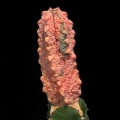
by Valentino Vallicelli



















